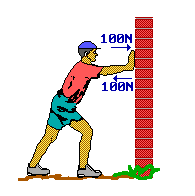Q-hyun Kim
Character Animator
Walk cycle is very basic movement and foundation for further body mechanics but it's very hard.
I realized that there are a lot of principles and knowledge inside of walk cycle. Here is that thing I want to share.
For animating walk cycle, we need to have five basic key poses like below.
(Rig from Animation Mentor)
[Pic #01]
[Pic #02]
First, let's talk about translation of pelvis.
we need to see pelvis movement to analyze walk cycle since pelvis leads whole body mostly.
As pic #01, the pelvis part goes to lowest height at down pose and highest height at up pose and then these effect whole body height and we can check translation of left/right from front view. As you can see pic #02, the pelvis part starts to go to right on your side at down pose from center at contact pose for balance and keep moves a bit more at pass pose for cushion but it goes back to center at contact pose through up pose.
[Pic #03]
Second, we have to understand rotation of pelvis for basic body mechanics. As you can see pic #03, the pelvis rotate left/right depending on legs. We have to think which leg of two the character uses for standing pose. For example, at contact pose of pic #03, this character is using right leg on his side. Newton's third law says that all forces between two objects exist in equal magnitude and opposite direction,
FA = −FB
which means right leg of this character pushes ground and the ground pushes right hip simultaneously. This makes pelvis rotate like pic #03.
At down pose the character switches leg to left for supporting body, so pelvis rotates opposite side like above. After, he is lifting his right leg to step further, which is pushing right part of pelvis and then it rotates opposite again. Next contact pose he drops his right leg to ground for step, which pulls right pelvis also down and pelvis rotate opposite again.
What about chest!
Human body is always trying to balance instinctively. Once human's pelvis, source of gravity, moves and rotates one side, chest needs to its job for balance. Yes! Twist! makes balance our body. As you can see the picture above, the chest line is trying to balance body by using twist.
Let's see side view!
[Pic #04]
Pelvis (Hip) is rotating up/down in this side view like pic #04. This character is walking forward and moving up/down at the same time and the pelvis needs to lead whole body as I said. Therefore, pelvis itself needs to have two forces to horizontal and vertical direction. Pelvis rotation helps body move those directions. At down pose, pelvis rotates up since body needs to move up. However pelvis needs to prepare movements in advance and it starts to rotate down from pass pose to help body move down and forward. Chest is twisting also for balance and those rotation make torso arc like red line of Pic #04.
Those are what I studied. It seems quite simple but of course, there are more principles and physical science I haven't said. This is the very basic description I simplified. The video I put below is walk cycle test from the study. Thank you for reading!










